Affordable and high-quality gain for projector screens.
The best gain for a projector screen allows you to see a bright and clear image. The light amplification factor may vary from 0,8 to 6 depending on the model. Front-projection screens have a gain of 1-1.2, while reverse-projection ones have a 2-2.2 gain. A screen with a gain of 1 evenly reflects projected light. It means that viewers sitting in front of and on the sides of the screen will see an equally bright image.
The light amplification factor is different from the viewing angle. A high-gain screen will have a narrow viewing angle. Front-projection screens have a viewing angle of up to 45-50 degrees, while reverse-projection ones have a viewing angle of 30-40 degrees. Screens with a high amplification factor of 1.5-2.5 allow you to see a bright, high-contrast image. However, not all viewers will see a high-quality image, as the light might not be evenly distributed.
The best gain for a projector screen guarantees high-quality projection and allows you to see an image clearly from any point in the room. The light amplification factor should be 1 or lower. It will allow a projector to deliver a high-contrast image with saturated colors.
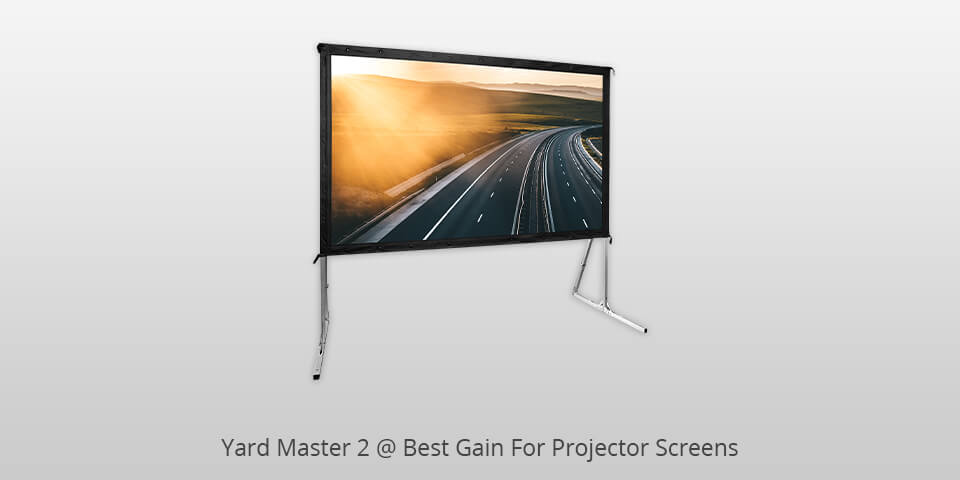
Dimensions: 109.8 x 36.7 x 86 inches | Gain: 1.3 | Aspect Ratio: 16:9 | Diagonal: 120"
The Yard Master 2 is the perfect unit if you are looking for the best gain for a projector screen. It provides you with high definition projection that comes at a very affordable price as well.
It comes with the highest quality digital signal processor available on the market today. The Yard Master 2 comes with a 1 year limited factory warranty. This is one of the best benefits that you can get when you purchase these monitors.
It also comes with a built in VGA input port, which allows it to be used with computers and other video devices that have a VGA output. The next feature that this unit has that makes it the best for a projector screen is the digitally stabilized display.
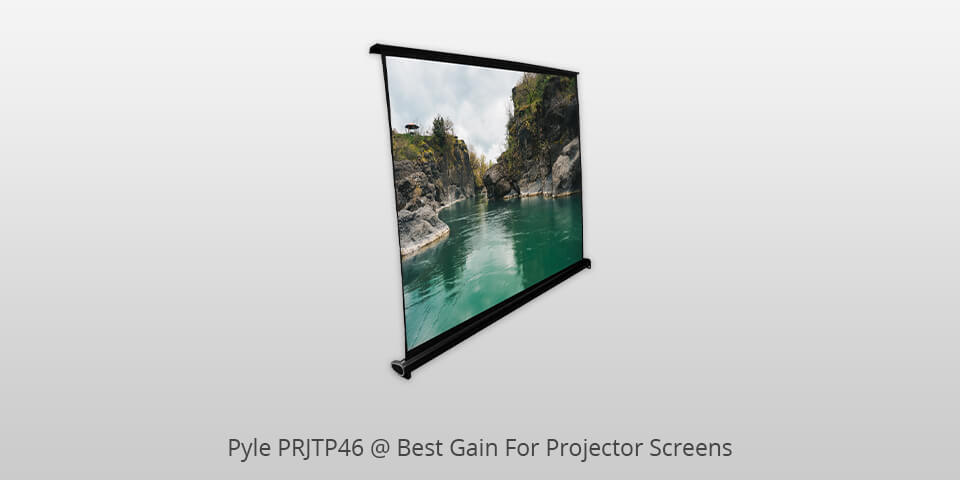
Dimensions: 37.5 x 4 x 4 inches | Gain: 1.2 | Aspect Ratio: 4:3 | Diagonal: 40"
The secret to the best possible viewing on Pyle PRJTP46 is provided with the inbuilt digital processing unit or simply referred to as DPU. A wide range of technologies like VA, DLP and LCD is available along with the inbuilt digital processing unit.
With the help of the various models and options available, it is possible to adjust the brightness and color of the screen to suit one's requirement. The other attribute that helps in the best gain for a projector screen is the built in LED backlight system.
The LED backlight system can be automatically turned on and off depending upon the needs of the user. This feature not only improves the brightness and color of the screen but also controls the machine operation.
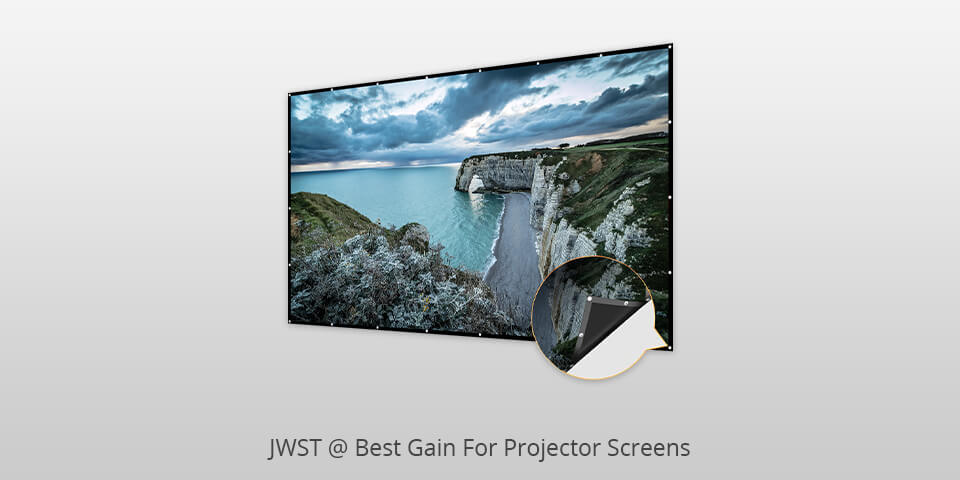
Dimensions: 22.2 x 16.46 x 2.44 inches | Gain: 1.1 | Aspect Ratio: 16:9 | Diagonal: 100"
The JWST best gain for a projector screen has the capability of reducing the heat build-up on your LCD or Plasma screen as it uses a new technology called the'ESDF technology'. This is one of the best Gain for a projector screen that is available today.
This device also offers precision and accuracy when it comes to your viewing angle and makes sure that you get the best viewing possible. It also provides high levels of brightness and contrast.
The other great feature of this best gain for a projector screen is that it is very easy to install and is almost maintenance free. You can simply slide it onto the surface of your projector screen and it is ready for use.

Dimensions: 22.3 x 16.6 x 2.6 inches | Gain: 1.1 | Aspect Ratio: 16:9 | Diagonal: 80"
The JWST SF-150 best gain for a projector screen is a step forward in efficiency. This is the most recommended SF-150 by professional users of projectors, graphics experts, technicians, and graphics equipment dealers.
It can be used with any projector brand and configuration. Most importantly it has features that would make your job easier when handling tricky and tight spaces, where an operator cannot afford to make a mistake or has to deal with a restricted workspace.
If there are problems with glare control, this screen can be used to solve those problems. The best gain for a projector screen is sensitive to high intensities and low temperatures. Therefore, it is not recommended for general use because of its sensitive nature.

Dimensions: 14.5 x 13.77 x 2.16 inches | Gain: 1.3 | Aspect Ratio: 16:9 | Diagonal: 120"
If you want to get a clear and crisp image on your screen, then the Jwsit Pvc Black Best Gain for a Projector Screen could be the perfect fit for you. One of the best things about this screen is that they are able to create a very tight radius that will help to get the clearest picture available on the projection screen.
The black fabric that is used in this screen is designed in such a way as to be very tightly wrapped around the light emitting diodes or LEDs that are located inside the projector. This provides an almost zero-degree curvature so that the screen can project an image with absolutely no distortion whatsoever.
There are many other benefits that you can enjoy when you purchase a Jwsit Pvc Black Best Gain for a Projector Screen. One of the best things that it will allow you to do is to reduce glare so that you do not have to turn your television monitor away from the window in order to get some sleep.
| IMAGE | NAME | FEATURES | |
|---|---|---|---|

|
Yard Master 2
Active 3D
|
CHECK PRICE → | |

|
Pyle PRJTP46
Durable
|
CHECK PRICE → | |

|
JWST
Anti-Wrinkle
|
CHECK PRICE → |
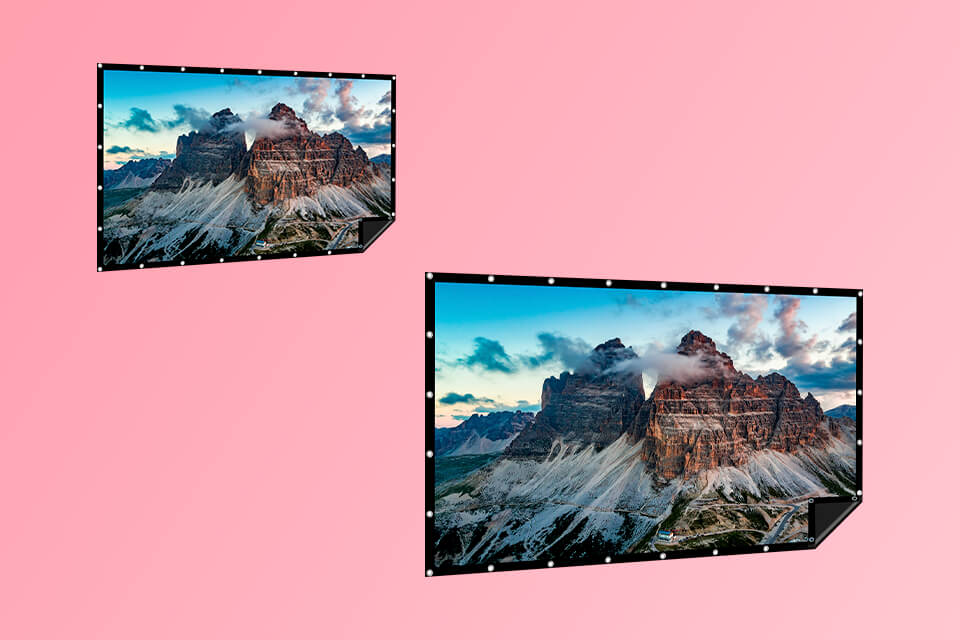
Wall-mounted and ceiling-mounted projection screens are used for stationary installation. If you need to use a projection screen for on-site demonstrations or want to move it from one location to another, make sure to select a portable option with the best gain for a projector screen. To find the best place to install the screen, you should consider the size of the room.
Portable screens differ in design and mounting methods. There are floor-mounted and table-mounted screens. Tripod projector screens are the most popular ones, as they are lightweight and can be installed quickly and easily.
Many projectors for a home theater come with a 9:16 screen. The best option for office use is a 3:4 screen. To enjoy high image quality, you need to select a screen that matches the format of a projected image.
If you choose the wrong type of screen, you may see black stripes either below or on the sides of the image. There are three main video projection formats, 1:1, 4:3 and 16:9. If you need a screen to project SD or HD videos, you should select either a 4:3 or a 16:9 format.
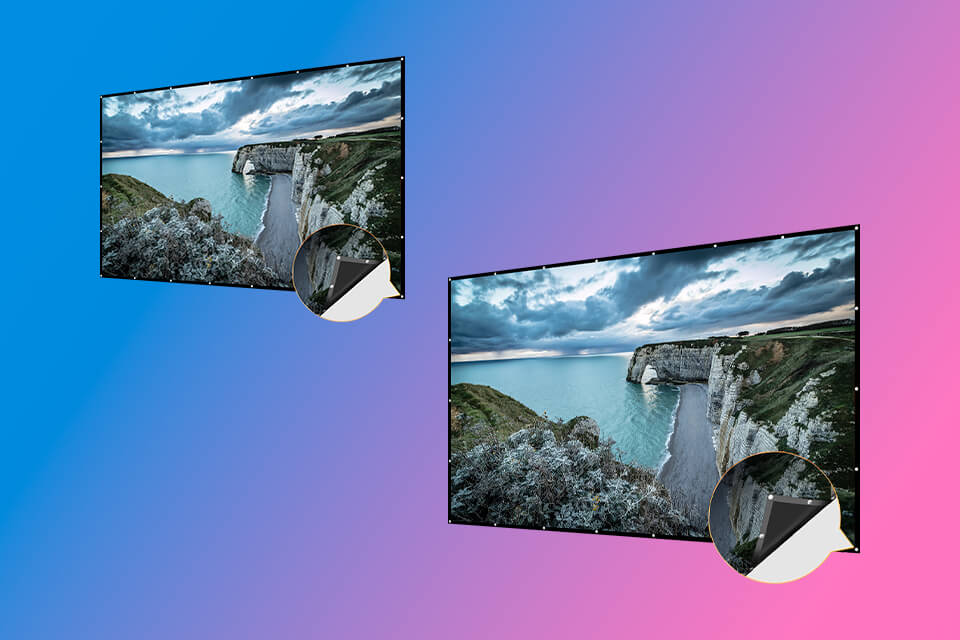
Roll-up projector screens can be easily transported, folded and unfolded. Besides, they don’t take up much space. However, it might be difficult to find an even surface.
Fixed frame projection screens are perfectly flat, which allows you to see an undistorted image. However, they are difficult to transport from one place to another.
A wide viewing angle allows you to see a high-quality image even if you aren’t sitting in front of a screen. If you have a short-throw projector, make sure not to use a screen with a narrow viewing angle, as its brightness might be uneven even if you are looking at the screen from a 90-degree angle.
In most cases, a 100-degree viewing angle will suffice. When selecting a projection surface, pay attention to the best gain for a projector screen. If you want to minimize side backlights, you need to select a screen with a narrow viewing angle.